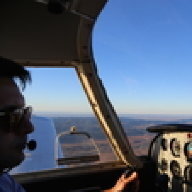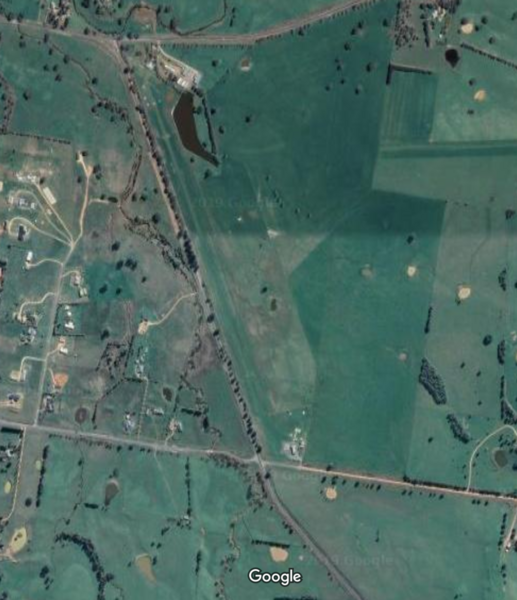-
Posts
47 -
Joined
-
Last visited
Content Type
Profiles
Forums
Gallery
Downloads
Blogs
Events
Store
Aircraft
Resources
Tutorials
Articles
Classifieds
Movies
Books
Community Map
Quizzes
Posts posted by Okihara
-
-
I didn't read through all the messages so perhaps this has been mentioned by others before. If not, one thing might be that quite a bit has been going on the Aussie side of things on PPRuNe in the last six months as well. I don't know if that alone could explain the drop that you observed but I would expect that it might be a contributing factor.
-
You mean Moorabbin. That spot used to be a good place for spotting and taking photographs, but those new shops and that pile of earth killed that. I don't know what they plan to put on that big mound in the foreground.
I don't know. It's truly upsetting to see all those developments around the airfield. This is especially sad considering the low-end shops that sprouted up. Australia needs more Aldi, DFOs and mattress shops. By all means, put them next the runways.
-
-
Most of WA is still terra incognita to me. I like those boab trees. Very nice pictures. What high wing are you flying, may I ask?
-
I suspect the VFRG will be replaced by the Plain English Guide to Part 91 in a couple of years.
-
Not getting out of aviation just yet but only away from Australia for a while so I'm parting with the documentation, sample exams and binders of regulations that served me well in my quest to survive through flight training in Melbourne and all those CASA exams. Minor highlighting only, and just the crustiest bits that you would anyway need.
When I was a student pilot myself, I attempted in vain to buy those from someone who wouldn't need then any more. This is why I decided to sell them. I'm just keeping my AIP for sentimental reasons (do IREX and you'll become best friends).
Here's what I have got left that I will not be taking with me. Feel free make an offer in your message.
In brackets is the price new just for reference. I'm Melbourne based and often in Moorabbin but happy to post if you want it.
Regulations (all in sleek and shiny Airservices binders):
– CAA, CAR, CASR ($129)
– CAOs ($81)
– VFRG (2015, $50)
Operations (15AUG2019):
– DAPs EAST (2 binders, $67)
– DAP WEST (1 binder, $49),
– ERSA (spiral bound, without RDS, $28)
Textbooks and sample exams:
– BAK (ATC, the "red book", no highlighting, $88)
– RPL/PPL Vol 2 (Bob Tait, highlighted, not on the pictures, $99)
– BAK (Val Dyson-Holland, 3 exams, $30),
– PPL (Rob Avery, 4 exams, $39),
– PPL (Ground Effect, 3 exams, not on the picture, $39)
– IREX (Rob Avery, 4 exams, $65)
-
Take me, take me!
-
i was thinking of video rec my flights i will begin to do that it obviously makes sense and yes the radio calls and hearing and processing the rx while doing eveything else can be challenging ive also found.
thanks for the advice ?
Cheers
Actually, I initially tried to this neatly by using a cable splitter but found the recorded signal to be clipped. I eventually went for an easier option: I bought a simple, $15 microphone and placed it directly in my headset ear cup. That works like a charm, brilliant quality and I don't have to worry about the recording level.
As for editing my recordings, I actually just store and use them raw. I would mostly use the audio as it contains more information but in some cases the video is useful too.
Good luck and enjoy your training.
-
 1
1
-
-
I did my training 0h to RPL in 37h at Moorabbin, all of it in Warriors II and III.
I think I could have cut another 3-4h, had I been more organised and more strict with my instructor. The sticky point for me was a delay in getting my medical certificate processed which meant that a month went by before I could do my first solo.
In hindsight it was my mistake as I should have gone to a DAME straight away. Unfortunately I wrongly assumed that it wouldn't take long to get that processed afterwards. The other sticky parts were mostly down to school organisation and getting them not to cancel lessons all the the time. At one point I even requested that we do two flights a day to get through the syllabus.
Technically speaking, I found landings to be the hardest part to master. I changed instructors midway into my training and the new one was a obsessed with hitting the sweet spot on the ASI right on base and final. Becoming more respectful of my airspeed on final really helped me the most. The other part I found tricky was staying focused while receiving instructions from ATC. I must have given those folks in the tower a bunch of good laughters ?
My humble advice if you want to keep your time down:
1. prepare your lessons beforehand and be as ready as you can,
2. squeeze as much training into as little time as you can afford to keep your muscle memory fresh (nothing worse than letting weeks lapse between flights),
3. commit your checklists to memory,
4. practice scenarios in the aeroplane on the ground, engine off, e.g. PFL. If necessary, battery ON and learn every corner of your avionics,
5. record your flights, both audio and video. No matter what level you're at, there's always a lot going on in a flight lesson. Your brain only has so much bandwidth to process all those simultaneous signals. I found that having the ability to replay my flights afterwards allowed me to get so much more out of them and know what to focus on for the next ones.
-
 1
1
-
-
Yeah these guys joined a right base (well not even base really) when the circuit is definitely left, and not a radio call between them. Both - GA aircraft.
On other occasions there’s a guy that flies straight down the runway at circuit height and then gets off the end and pulls nose up and almost hammer head turns to come back and land. Again - GA.
its surprised me as I’ve never seen stuff like this before at other ADs.
And I’m certainly not wanting to be a trouble maker, and stir the pot - was just curious.
Do note however that on IMC days at ADs with instrument approaches, IFR pilots can basically break off their approach once they're in the circling area in order to manoeuvre as they see fit to land. This will not happen if you have VFR traffic because IFR pilots will be joining a regular circuits. During a circling approach however, no restriction is imposed on how the pilot lines up the aircraft with the runway. The circling altitude will probably be below standard circuit altitude. For instance, the NDB-A approach at Latrobe Valley has a minimum descent height of 800 ft.
-
Departing overhead always seems like a silly idea to me. I fly away from the circuit, 3nm if required and turn onto track, why fly into potential conflict?
Absolutely agree with you!
-
 1
1
-
-
Speaking out of personal experience, one fine day inbound into Shepparton from Mangalore with a decent 20 kts strong southerly wind blowing over the region, I had been monitoring the CTAF for long enough to conclude that nobody was flying, esp. after receiving no reaction to my inbound call. And just as merry as I am, approaching YSHT from the south, and giving the AWIS a quick listen to confirm that it'll be runway 18, a champion on their climb following an obvious upwind departure from runway 18 races past me in the opposite direction at roughly the same height but luckily with enough horizontal separation. I immediately checked my CTAF frequency to ensure that I hadn't made any mistake dialling it in and indeed, the frequency was correct. I concluded that the prick just hadn't been broadcasting at all or had the wrong frequency. The aircraft which looked like a Cherokee definitely was radio equipped. From that day onwards I am never assuming that radio silence equals absence of traffic and I'm cautious not to approach an aerodrome on the reciprocal of the active runway at an altitude that can be in conflict with traffic departing on the upwind leg. This all seems obvious when you read it, I know. There are complacent pilots out there, assume nothing!
-
 3
3
-
-
Avalon...
That's the one!
-
Tocumwal? Yes for the arrows but no parking on the left.
-
-
If I may weigh in on this, I usually record my flights on camera and while takeoffs are entertaining to watch, I find that the whole approach part leading to the landing is a far, far more interesting part of the flight to experience and watch again later on. Landings clearly win the day for me.
-
Sorry mates but seriously, it would almost make me happy to pay just to see this moron be out there everyday to record every single movement ?
I hear that YGLB is a great place to practice touch/go circuits by the way.
-
 1
1
-
-
This VDO-FS difference is the bread and butter of flight schools and that's why they love having their students do circuits.
Between 0.2/0.3 is my average VDO-FS difference flying in and out of Moorabbin. I regularly peeked at the trip sheets of C172 at one of my flight schools. Over a month, I'd often find that FS = 75% VDO. Common pitfalls include: run-up bays full, long queue of aircraft at the holding point awaiting clearance on busy circuit days. I've long been advocating for rates to be based on flight switch instead of VDO. Obviously if you're going to hire an aircraft for a longer period of time, make it a nonnegotiable point that you pay flight switch and not VDO, and preferably dry rate because fuel is (almost) always reimbursed at local rates.
-
 1
1
-
-
-
-
-
That's it! It is YBLT (Ballarat).
A word of caution to those who intend to visit: a regional school has the tendency to carry out straight-in approaches in twins with little regard, if any, to traffic established in the circuit. We joined midfield crosswind, and broadcast 10 nm, upon joining, turning downwind and base but these blokes couldn't care less and still cut straight in front of us. If you do encounter them, just call them out and report them.
-
Hint: That day we could have landed on 31 too.
-











Guess The Airstrip
in AUS/NZ General Discussion
Posted
YCAR?
I've been overseas for two months now and boy do I miss flying back home ?